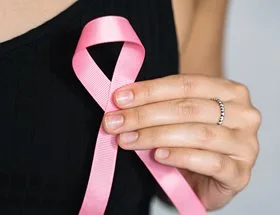
Reduce your drinking
Find tips, strategies and advice to help you reduce your drinking.

Alcohol has toxic effects on cells, tissues and organs in the body. This is caused by:
The more alcohol you drink - particularly the more alcohol you drink regularly over time - the higher your risk of developing cancer.5
Alcohol causes cancer in at least seven sites in the body. Even drinking small amounts of alcohol increases your risk of developing cancer. These sites are:
Click on the tabs below to learn more about how alcohol causes cancer.
Alcohol is the leading modifiable risk factor for breast cancer. Alcohol can increase levels of estrogen, an important hormone in the growth and development of breast tissue. This increases the risk of developing breast cancer.
Alcohol can also damage DNA in cells which can make them more likely to divide abnormally and lead to cancer.
A small amount of alcohol is broken down by tissues in the gastrointestinal tract. Alcohol can permanently damage cells in the lining of the small or large intestine (colon) or rectum. This damage to DNA in cells can lead to bowel (colon or rectal) cancer.
Alcohol lingers in the mouth irritates cells - this can cause damage over time and lead to cancer. This risk is significantly higher if you combine drinking alcohol with smoking. Alcohol makes it easier for other cancer-causing chemicals in tobacco smoke to enter the lining of cells in the mouth.
Alcohol is an irritant to cells in the throat. This can cause cancer in the upper throat (pharynx), voice box (larynx), and oesophagus (food pipe).
Even at low levels of alcohol use (up to one standard drink per day) the risk of developing cancer is significantly increased in sites where alcohol comes into direct contact, including the mouth, throat, and oesophagus.
The risk is significantly higher if you combine drinking alcohol with smoking. Alcohol also makes it easier for cells to absorb other cancer-causing substances like tobacco smoke.
Over 90% of alcohol is broken down by enzymes in the liver. Regular and heavy alcohol use can damage the liver, leading to inflammation and scarring (cirrhosis). The more cells in the liver try to repair the damage, the more likely they can make mistakes in their DNA, which can lead to cancer.

Up to 1 in 10 cases of breast cancer in Australia is linked to drinking alcohol.7,8
For women who drink one bottle of wine per week, the lifetime risk of developing cancer is estimated as being the same as smoking 10 cigarettes per week.9
The best way to reduce your risk is to reduce your drinking.
3,500Australian adults are diagnosed with cancer caused by alcohol each year. | 4%Of cancer cases in 2020 were caused by alcohol. | 3Western Australians die from alcohol-caused cancer each week on average. | 249,700The estimated number of cancer cases alcohol will contribute to among Australians who were adults in 2016. |
Yes. There’s no safe level of alcohol use when it comes to cancer risk. The more you drink and the more often you drink, the greater your risk. The relationship between cancers and low levels of alcohol use (up to 1 standard drink per day) is now stronger than previously recognised.
Drinking alcohol and smoking tobacco significantly increases your risk of developing cancer. This is because tobacco and alcohol work together to cause more damage to cells, especially in the mouth and throat.
For heavy users of alcohol and tobacco, the risk of developing mouth and throat cancers increases up to 35 times greater.
To reduce your risk of cancer, if you don't drink, don't start. If you do drink, the best way to reduce your risk is to reduce the amount you drink.
The Australian Alcohol Guidelines recommend that healthy men and women should drink no more than 10 standard drinks a week and no more than 4 standard drinks on any one day.
Learn more about tips to reduce your drinking.
Page last updated24 October 2023